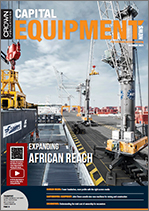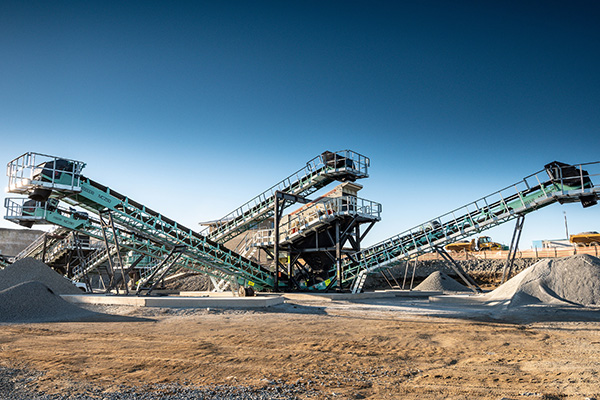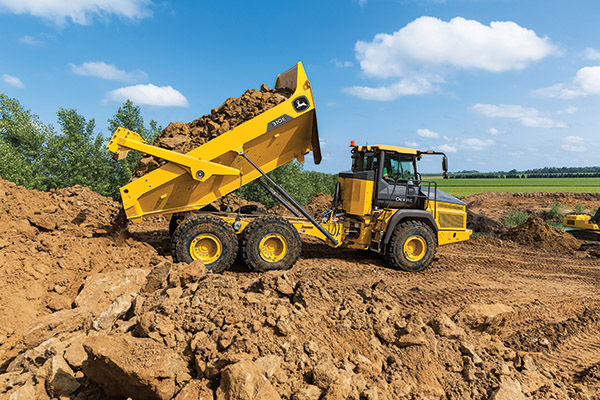 On the Cover: The recent conclusion of two landmark deals with two major African port authorities – Ghana Ports and Harbours Authority and the Namibian Ports Authority – has set Liebherr Africa’s Maritime Cranes division on a major growth trajectory in Africa.
On the Cover: The recent conclusion of two landmark deals with two major African port authorities – Ghana Ports and Harbours Authority and the Namibian Ports Authority – has set Liebherr Africa’s Maritime Cranes division on a major growth trajectory in Africa.
Despite the disruptions brought about by the COVID-19 pandemic and the resultant tough business conditions, Libherr-Africa’s Maritime Cranes division has recently recorded some notable successes in Africa, following the conclusion of what sales manager Darren Jankelow terms as two landmark deals.
Right in the middle of the hard lockdown in April last year, Liebherr- Africa initiated negotiations with Alloud Company Limited for the sale of two LHM 550 harbour mobile cranes to Ghana Ports and Harbours Authority (GPHA). The two cranes have since been delivered, with the milestone deal marking the 1 300th crane to roll off Liebherr’s Rostock factory since 2015.
Following a lengthy negotiation process, Liebherr-Africa has also concluded a deal to supply two LRS 545 Liebherr reachstackers to Namibian Ports Authority (Namport) for use at the Port of Walvis Bay, Namibia’s largest commercial port.
“These deals with two of the largest port authorities in Africa are testimony to our continued growth in the maritime cranes market in Africa. It also confirms the market-leading position of the Liebherr product and aftersales service in this market segment, as well as the established relationships we have built over the years,” says Jankelow.
Casting the spotlight on efficient screening
The criticality of reliable and efficient screening equipment to the overall productivity of processing plants cannot be reiterated enough. Speaking to Capital Equipment News, a panel of experts discusses key parameters that influence efficiency in screening, factors that should motivate selection of a screen and some of the advances in screening technology in recent years.

The significance of screening in processing plants cannot be underestimated and often separates profitable operations from those that struggle to meet production targets. This is the view of Francois Marais, director sales and marketing at Pilot Crushtec, who says that the key lies in the efficiency and the ability of a screen to size material effectively and reliably so that the required saleable product will meet grades without having to recycle materials through the plant.
“The bottom line for many operations is sizing material for sale to market. Even an increase in production of 1% due to the selection of the correct screen in a certain application will increase revenue on a moderate production plant significantly to such an extent that it is equal to the CAPEX value of the screen,” reasons Marais.
Annelize van der Walt, business development manager – mining and minerals at Kwatani, says screens are a vital element of a mineral processing operation, and need to be engineered for tonnage to ensure that the specific requirements of the application are met. Productivity on most operations, she adds, is measured in terms of a daily, weekly or monthly production capacity.
“The best production capacity from any mineral beneficiation equipment (jigs, DMS, magnetic separators, ore sorters, mineral spirals, etc.), is typically achieved within a specific feed particle size range. As soon as the material feed is contaminated with oversize or undersize material, one can expect a drop in the efficiency of the overall circuit or damage to the beneficiation equipment, which leads to unplanned equipment breakdowns or increased maintenance downtime. The use of reliable, efficient screens is critical to ensure the best possible plant availability by ensuring the feed material to each unit process is correct,” says Van der Walt.
As screens are the link between many unit processes, adds Van der Walt, they also play a significant role in balancing the production capacity between the comminution circuit and the beneficiation circuit. “By dealing with an experienced original equipment manufacturer (OEM) such as Kwatani, operators can ensure that their vibrating screens are engineered to cater for the specific application requirements. Four decades of experience has seen Kwatani supply over 16 000 screens across commodities in more than 45 countries and it is this in-depth expertise that underpins our ability to correctly assess an application and provide the most appropriate vibrating screen solution,” she says.
For Francois Fouche, senior screening specialist at Multotec, screening plays a major part in the beneficiation process. When it is considered that the feed to the various types of process equipment downstream of the screening process need to be within a specific size envelope in order for them to perform optimally, the importance of efficient screening is critical, says Fouche. The efficiency of cyclones, flotation plants, spiral circuits, jigs etc. depends on efficient upstream screening.
John Deere unveils nine new machines for mining and construction
Since the announcement in March 2021 of its construction equipment expansion into sub-Saharan Africa, John Deere Africa and Middle East has added an additional nine machines to its existing lineup of 17. The new arrivals include backhoe loaders, wheel loaders, dozers and a skid steer range, as well as two completely new articulated dump truck models.

According to John Deere sales manager Construction and Forestry AME Griffiths Makgate, the introduction of these nine new units forms part of the company’s expansion plans into the market.
“We have elected to introduce the full product line in batches,” he says. “These models are the second batch of new machines we are bringing to market. This launch is an indication of what the market is yet to see from John Deere.”
In addition to the 315SL backhoe loader which is suited for operations in confined spaces, the company has added the 310L backhoe, a more general-purpose machine which sports a 63 kW engine; 4-speed PowerShift transmission; digging depth of 4,2 m; loading height of 3,1 m and a bucket capacity of 0,96 m³.
John Deere has also added the 744L wheel loader to its existing stable of five models in the market. Designed with the mining and quarrying customer in mind, this model features a 236 kW engine; a 3,8 – 5,25 m³ bucket capacity range and an operating weight of 25,3 tonnes.
Makgate says that, while the company’s existing five wheel loader models are smaller and more in line with its construction customer product line, the 744L “caters for the mining customer as this is a production class machine able to handle bigger operation and production requirements.”






